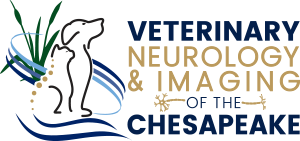Examples of HBOT Enhancing Treatment & Care: Adjuvant Hyperbaric Oxygen Therapy In The Management Of Near Drowning
A 17-year-old male neutered Yorkshire Terrier was found and retrieved from underwater in a home swimming pool by the owner, who immediately rubbed his chest and tipped him upside down to drain water from his airways. The dog resumed breathing, and the owner immediately drove to the hospital and presented him to the emergency/critical care service. It was not known how long the dog had been underwater. The owner noted that this elderly canine had a history of poor vision, poor hearing, and a cognitive dysfunction disorder.
On presentation the patient was minimally responsive, laterally recumbent, and soaking wet. He was not shivering.
The temperature was 91.5 Fahrenheit, heart rate 120 BPM, and respirations 44 RPM. There were increased BV sounds bilaterally in the lung fields. PLR's and Doll's Eye reflex were absent. The patient was given flow-by oxygen while blood was drawn for rapid analysis and an IV catheter was placed. Chest radiographs revealed a diffuse caudal bronchointerstitial pulmonary pattern.
The patient was dried with a 100% cotton towel, and immediately placed in the hyperbaric oxygen chamber at 1.5 ATA for 40 minutes.
Immediately following the first HBOT session and upon exit from the chamber the patient was able to walk across a rubber mat placed on the floor.
The patient was treated in an ICU oxygen cage for 24 hours then transitioned to room air. IV fluids and antibiotics were administered. Follow up radiographs did not demonstrate development of pneumonia. Two more HBOT sessions were given over the next 24 hours, and the patient was discharged to return home and follow up with the primary care veterinarian on day 3. Gait and mentation improved progressively throughout hospitalization.
Near drowning results in some level of complete global cerebral ischemia. A 1992 paper from Japan describes a controlled study where adjuvant HBOT administered promptly to canines after 15 minutes of complete global ischemia [CGI] dramatically improved neurologic recovery. (Reference, Takahashi, M, et al, "Hyperbaric oxygen accelerates neurologic recovery after 15 minute complete global ischemia in dogs.” Critical Care Medicine, 1992; Vol 20, No11:1588-1593).
Other clinical patients who experience CGI and may therefore benefit from adjuvant HBOT include those surviving cardiopulmonary arrest, airway obstruction episodes, anesthesia associated complications, and near-hangings.
© RKLyman, LLC. All Rights Reserved.


